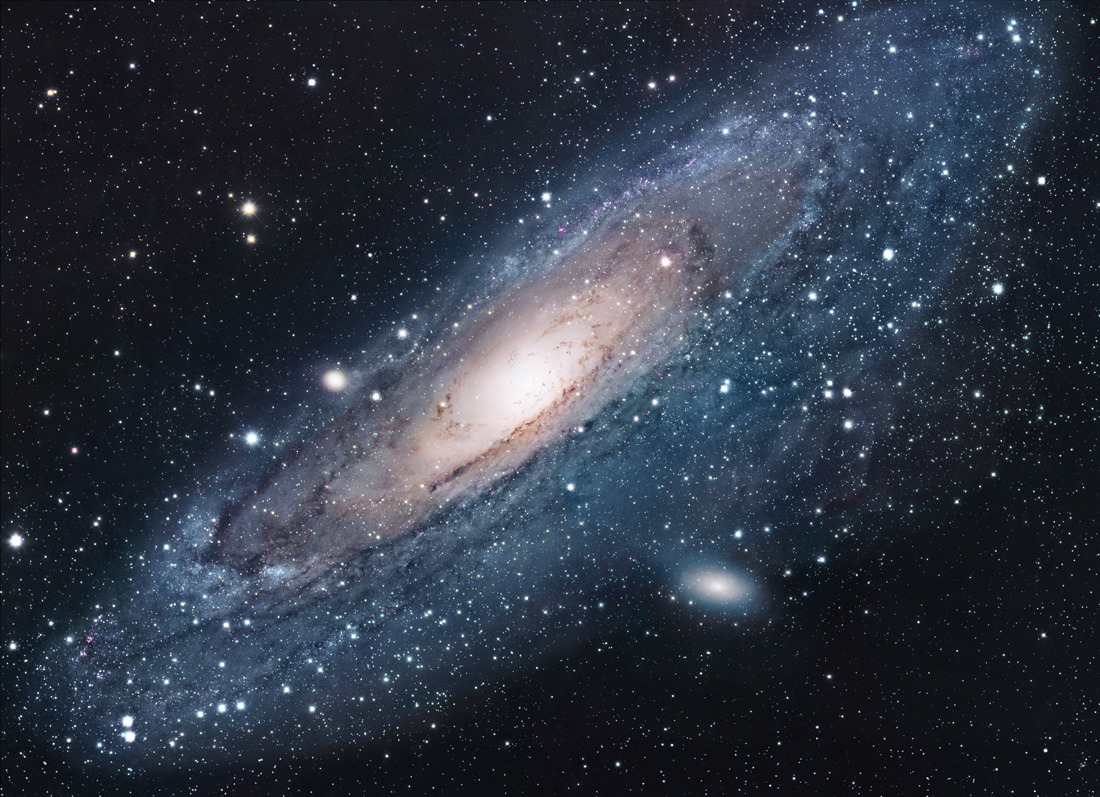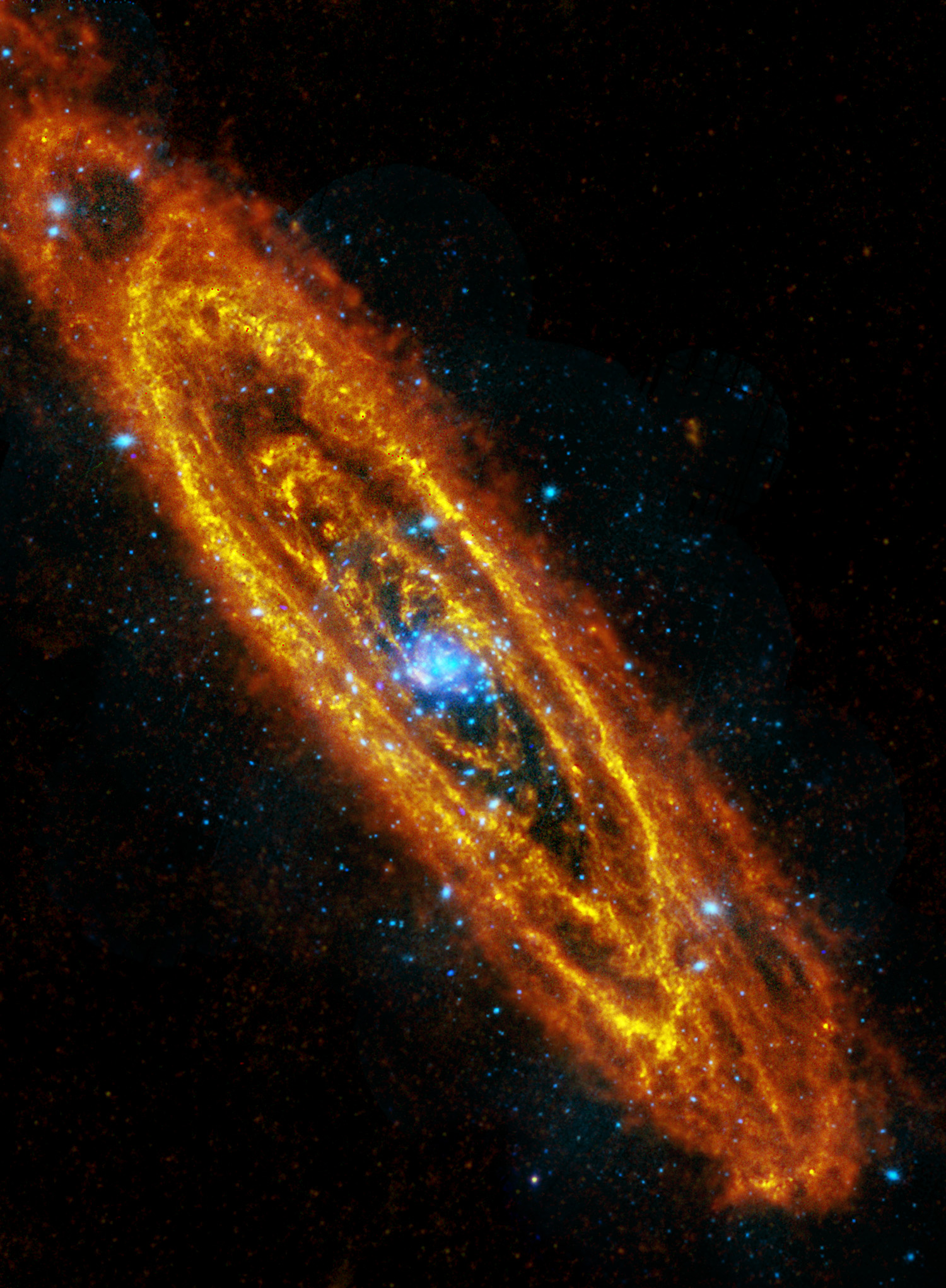The closest spiral galaxy to our own is the Andromeda Galaxy, known more formally as Messier 31 or M31. Although other galaxies are closer to us, Andromeda is probably the closest galaxy that actually resembles our own Milky Way. It can be seen as a faintish smudge in the sky with the naked eye, and even in urban areas it is visible with telescopes/binoculars. When photographed with a large telescope, it is 6 times as wide as the full moon. Andromeda is about 2.54 million light years (14,931,708,447,886,365,000 miles) away from us, meaning that light takes 2.54 million years to travel from Andromeda to earth and we are seeing Andromeda as it appeared 2.54 million years ago--we are, in fact, as with all other space objects, looking back in time when we view Andromeda. This is part of the reason why astronomers and astrophysicists concern themselves with extremely distant objects (and Andromeda is very, very, very, very close to us, comparatively speaking)--the more distant in space you look, the further back in time you look, and thus you can learn more about the conditions of the earliest moments of the universe.
 |
| Andromeda (M31), from NASA's Astronomy Picture of the Day series |
Andromeda is more than twice the size of the Milky Way, but telescopes and observatories can still capture it in all sorts of interesting ways. Below is Andromeda in infrared (the red parts--interstellar dust, mostly, sites of future star formation) and X-ray (the blue points--some binary stars in the final stages of stellar evolution) wavelengths.
 |
| apod.nasa.gov |




No comments:
Post a Comment